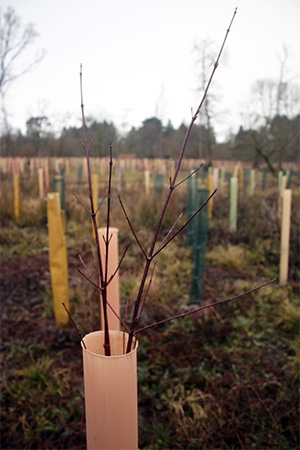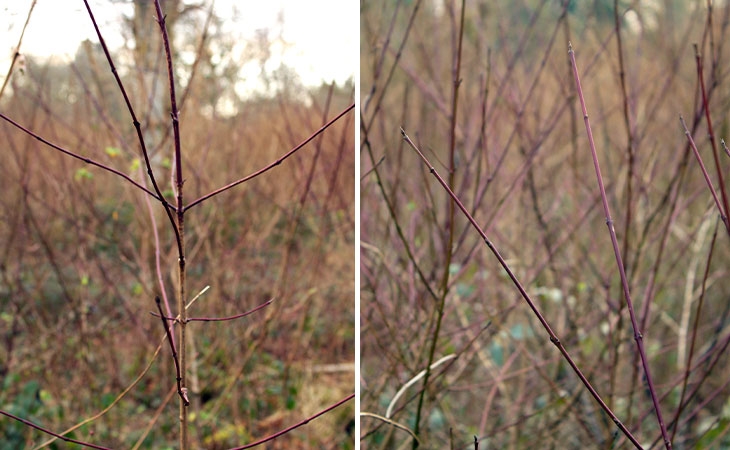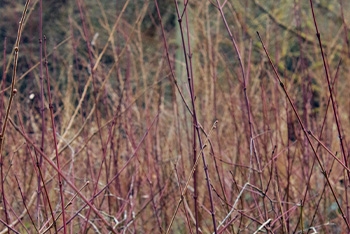Tree of the month: Dogwood
Dogwood Cornus sanguinea
This common hedgerow shrub can easily be spotted in winter where its crimson stems bring some much-needed colour to dull days – giving it the alternative name ‘Midwinter Fire’.

It’s usually found as a smaller shrub, but it can grow up to 10 metres with extremely hard timber. There are legends that an enormous dogwood tree was used to make the crucifix that Jesus was crucified on, but this may originate from a North American poem relating to another species - the flowering dogwood Cornus florida. This has very different flowers, with traits that are meant to signify the crucifixion – it also blossoms around Easter time.
Our native dogwood produces clusters of small white flowers later in the year which, once pollinated, develop into dark black berries called ‘dogberries’ – a fantastic food source for birds and mammals. The leaves become a deep red in autumn before falling, revealing the red stems in winter. These stems will remain green in the shade but become a brighter red where they get the most sun, which can sometimes indicate the direction of south should you be lost without a compass.

It's the stems which give dogwood its common name, as they were once used to make butchers skewers. These were called ‘dags’ or ‘dogs’, so the name may mean ‘skewer wood’. They were also used as arrows, and the prehistoric mummy ‘Ötzi the Iceman’, discovered in the Italian Alps in the 1990’s, was carrying arrows with shafts made from dogwood tipped with flint heads.
Read our other Tree of the Month blogs...


CATEGORIES
- Blog (760)
- Tree management (66)
- Community activities (74)
- Botanical (177)
- Learning (123)
- Landscape (63)
- Tree of the Month (81)
- Restoration (50)
- Spring (84)
- Seasonal (112)
- Winter (21)
- Projects (37)
- Conservation (76)
- Education (66)
- Participation (83)
- Silk Wood Community Planting Project (36)
- Silk Wood (41)
- Chalara ash dieback (31)